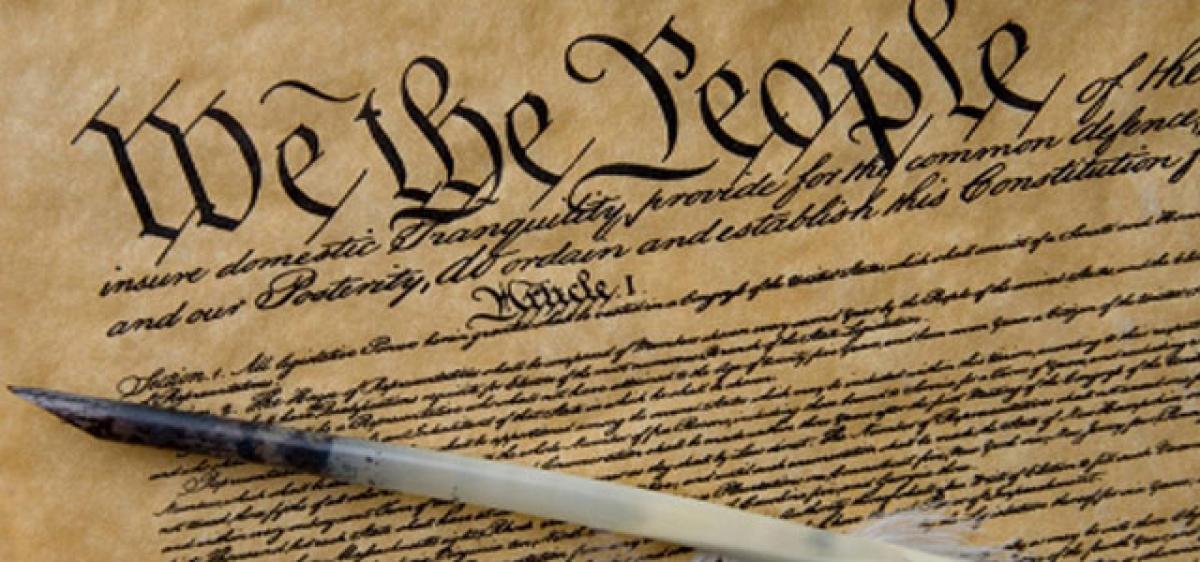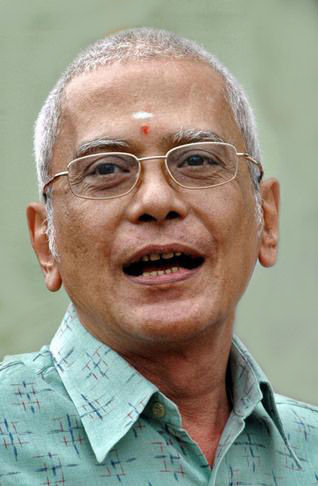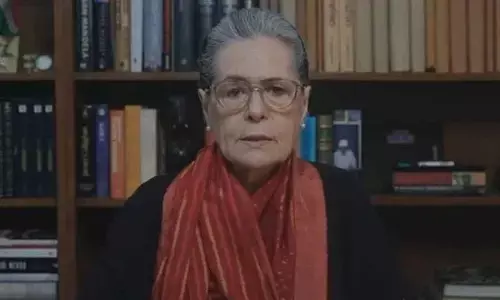How the Declaration inspired similar movements elsewhere

The Declaration inspired many other similar documents in other countries, with its ideas catching the fancy of the low countries, as well as in the Caribbean, Spanish America, the Balkans, West Africa, and Central Europe in the decades up to 1848.
United States Declaration of Independence part-II
The Declaration inspired many other similar documents in other countries, with its ideas catching the fancy of the low countries, as well as in the Caribbean, Spanish America, the Balkans, West Africa, and Central Europe in the decades up to 1848.
The French “Declaration of the Rights of Man and Citizen” (1789) was inspired significantly by the American Revolution and the important initial drafts were prepared by Lafayette, working closely in Paris with Thomas Jefferson. It also borrowed language from George Mason's “Virginia Declaration of Rights.”
The Declaration also influenced the Russian Empire. The document had a particular impact on the Decembrist revolt and political thought in the Russian thinkers. Among many others, the Venezuelan Declaration of Independence (1811), the Liberian Declaration of Independence (1847), the Declarations of Secession by the Confederate States of America (1860–61), and the Vietnamese Proclamation of Independence (1945) were products of the same revolutionary spirit.
The Declaration was also the source from which the spirit flowed for many other countries declaring rebellion against Colonial occupiers. These include the Haitian Declaration, the Argentine Declaration of Independence in 1816, the Bolivian War of Independence in 1825, the Texas Declaration of Independence in March 1836, Hungarian Declaration of Independence in 1849, the Declaration of the Independence of New Zealand in 1835, the Czechoslovak declaration of independence in 1918 and the Rhodesian declaration of independence, in 1965.
Women's suffrage and the Declaration
In July 1848, the first Woman's Rights Convention, the “Seneca Falls Convention,” was held in Seneca Falls, New York. It was organized by Elizabeth Cady Stanton, Lucretia Mott, Mary Ann McClintock, and Jane Hunt. In their "Declaration of Sentiments", patterned on the Declaration of Independence, the convention members demanded social and political equality for women. Their motto was that "All men and women are created equal" and the convention demanded suffrage for women. The “Suffrage Movement” was supported by William Lloyd Garrison and Frederick Douglass.
Argentina: Military Rule and Re-democratisation
In the beginning of the 16thcentury, long before Argentinian Independence, the Spanish arrived in Argentinian territory, where they were met with an indigenous population of around 330,000 inhabitants that belonged to different ethnic groups, many of them influenced by the Incan Empire.
After the arrival of Columbus and the conquest, the American territory was divided into two Viceroyalties that directly represented the Spanish king: That of New Spain (which included the Spanish colonies of North and South America, Venezuela and the Philipines) and Peru (which included all of South America from Panama to Patagonia, with the exception of Venezuela and Brazil, as Brazil belonged to the Portuguese crown). With its capital at Lima.
On account of the ranching industry, and the importance of the port of Río de la Plata, this region acquired great value and autonomy. In 1776, motivated by that factor, as also the trade within the Provinces of the Río de la Plata, as well as the Brazilian, French and British attempts to seize control of the area at that time, Carlos III created the Viceroyalty of the Río de la Plata, with the capital at Buenos Aires including the countries we know today as Argentina, Uruguay, Paraguay, Bolivia and part of Brazil. The last viceroy, Cisneros, renounced his post before the angry crowd gathered at the “Open Cabildo” (meeting of local leaders) in Buenos Aires on May 25, 1810.
The May Revolution
In 1810, tensions between creoles (Spaniards born in the Americas) and peninsulars (newly arrived Spaniards in the Americas) for control of the region's trade increased. A series of revolutionary groups found an excuse in the capture of the Spanish king Fernando VII, and the French occupation of Spain during the Peninsular War, to call an open cabildo with the hopes of discussing the political situation.
May 22, 23 and 24 were days of great agitation: many wanted to depose Viceroy Cisneros from his post, while others proposed the creation of a junta in which the Viceroy, along with Buenos Aires residents, would play an active role.
When it was decided that the Viceroy would stay, widespread disappointment inspired crowds to pound at the gates of the open cabildo and shout “the people want to know what this is all about”; they hoped for the Viceroy's resignation and the junta's dissolution.
This finally happened and the First National Government Independent of Spain was formed. On July 9, 1816, the independence of the United Provinces of the Río de la Plata was declared (which included modern-day Argentina, Uruguay and part of Bolivia) in a meeting of congress in Tucumán.
Independence was put into effect in 1817, when General San Martín's troops won definitive victory over the Spanish army. The Argentine War of Independence, which had begun in 1810, would end the following year in 1818. Viceroyalties continued to exist in Paraguay and in Upper Peru, causing constant confrontations between royalists (loyalists to the Spanish King) and revolutionaries.
Heroes of Argentinian Independence Manuel Belrano
On June 20, 1820, Manual Belgrano died in Buenos Aires in complete poverty. Although he had been a decisive figure in the independence process, and he had spent all his capital on the revolution, only one local periodical covered the news of his death.
Years later, in 1938, it was decided that the anniversary of his death would be celebrated on Flag Day, since Belgrano was the first to fly the Argentine flag, an event that took place in the town of Rosario in 1812.
Manuel Belgrano was a firm ideologist of the May Revolution. He defended the city of Buenos Aires from British attacks in 1806 and 1807 and he became a General to the troops that achieved the Argentine Declaration of Independence under the command of General San Martín. He also promoted trade, culture, rights and education in Argentina.
Martín was an Argentine military leader whose campaigns were decisive in gaining Chilean, Peruvian and Argentinian independence. Along with Simón Bolívar, he is considered one of the most important liberators of Spanish colonization in South America.
He was born in Argentina, in Yapeyú (in the province of Corrientes) and between the ages of five to thirty four years of age, he lived in Spain, where he began his military career actively fighting against Napoleon's troops, for which he was decorated and promoted to the rank of lieutenant colonel. At that time, he contacted revolutionary groups hoping for American independence and in 1812 he headed for Buenos Aires to collaborate in the emancipation of the Americas.
After the battle of San Lorenzo, he was placed in charge of the Army of the North, which was always under heavy attack from Lima royalists. San Martín designed a plan for liberation by attacking Lima by sea. First having to cross the Andes Mountains, the plan helped defeat royalists in Chile earning Chileans their independence. Later, he moved toward Lima, where with the support of local armies, he successfully ousted the viceroy and achieved independence for Peru.
On August 17th every year the country celebrates the “Passage of Immortality” of San Martín, commemorating the day of his death. A monumental mausoleum holds the remains of General San Martín in the Cathedral of Buenos Aires.
The Rhodesian Bush War, also known as the “Second Chimurenga” or the “Zimbabwe War of Liberation”,. was a civil war that took place from July 1964 to December 1979 in the unrecognised country of Rhodesia (later Zimbabwe-Rhodesia).- The conflict pitted three forces against one another: the Rhodesian government, under Ian Smith (later the Zimbabwe Rhodesian government of Bishop Abel Muzorewa); the Zimbabwe African National Liberation Army, the military wing of Robert Mugabe's Zimbabwe African National Union; and the Zimbabwe People's Revolutionary Army of Joshua Nkomo's Zimbabwe African People's Union.
The war and its subsequent “Internal Settlement,” signed in 1978 by Smith and Muzorewa, led to the implementation in June 1979 of universal suffrage and end of white minority rule in Rhodesia, which was renamed Zimbabwe Rhodesia under a black majority government. However, this new order failed to win international recognition and the war continued.
Negotiations between the government of Zimbabwe Rhodesia, the British government and Mugabe and Nkomo's united "Patriotic Front" took place at Lancaster House, London in December 1979, and the Lancaster House Agreement was signed. The country returned temporarily to British control and new elections were held under British and Commonwealth supervision in March 1980. ZANU won the election and Mugabe became the first Prime Minister of Zimbabwe on 18 April 1980, when the country achieved internationally recognised independence.


















